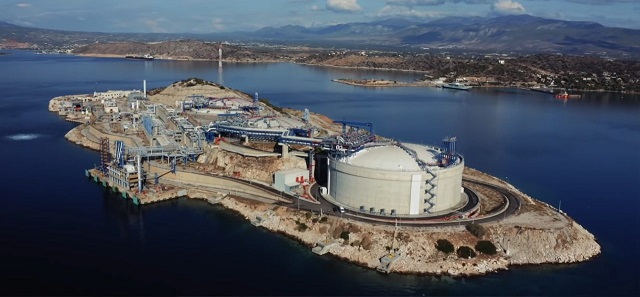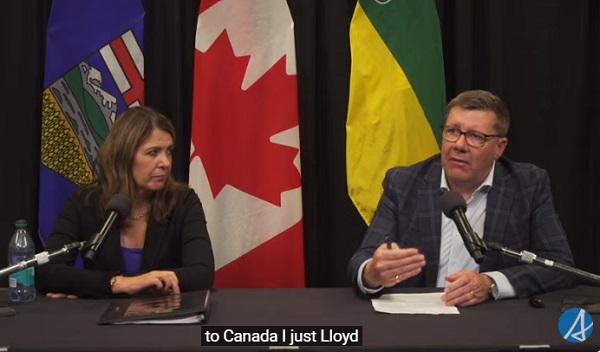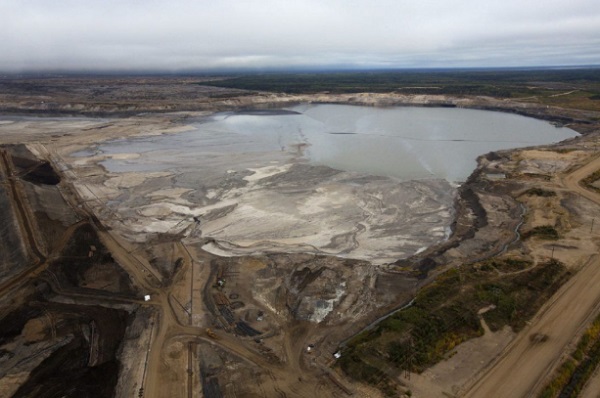Energy
Canada wallows on LNG sidelines, paralyzed by Ottawa’s onerous regulatory system

From the Frontier Centre for Public Policy
By Lee Harding
Mitsotakis said Greece has built a major facility outside the city of Alexandroupolis to process incoming LNG tankers. He said Greece will pump LNG to the rest of Europe and needs more at home as the country abandons coal.
When it comes to fossil fuels, the world wants what Canada’s got. The problem is, Prime Minister Justin Trudeau doesn’t care.
Fresh proof came with the recent visit of Kyriakos Mitsotakis, the first Greek leader to come to Canada in more than 40 years.
According to the office of the Prime Minister Trudeau, Mitsotakis was simply here to march in Montreal’s Greek Independence Day Parade, discuss “shared interests” and cut the ribbon as Greece purchased Canadian-made firefighting planes.
But, during an interview with CTV, Mitsotakis said his country would “of course” like to start importing Canadian liquified natural gas (LNG).
“We are a big entry point for LNG, not just for the Greek market, but also for the Balkans, for Eastern Europe. Theoretically, we could even supply Ukraine,” said Mitsotakis.
“In principle, yes, we are very interested in obtaining LNG at competitive prices.”
Mitsotakis said Greece has built a major facility outside the city of Alexandroupolis to process incoming LNG tankers. He said Greece will pump LNG to the rest of Europe and needs more at home as the country abandons coal.
Much of Europe’s energy has traditionally come from Russia or Middle Eastern autocracies. More than a decade ago, author Ezra Levant made the case for Canada’s “Ethical Oil” as a better alternative. Canada’s status as a democratic state that respects human rights and extracts oil with a minimal environmental footprint is as good as it gets. Mitsotakis, a Harvard-educated investment banker, understands that quite readily today.
“Canada is a country (for) which we share so many values,” said Mitsotakis. “I think we see eye-to-eye on many of the challenges that we face.”
Still, there was no mention of energy exports in Trudeau’s public comments regarding Mitsotakis, nor in official government communications about the visit.
Mitsotakis can take little consolation that his treatment is not unusual, as true as that may be. In the past 18 months, both the Japanese prime minister and the German chancellor returned home without official assurances that Ottawa was eager to offer bulk quantities of Canadian LNG.
Japanese Prime Minister Fumio Kishida came to Canada in January, 2023 making no secret of his “high expectations” to reach an LNG export agreement with Canada.
In August 2022, German Chancellor Olaf Scholz came to Canada hoping to reach an LNG deal. “Canada is our partner of choice,” Scholz said at the time.
Somehow, Trudeau said at a press conference with the German leader that there was no “business case” for LNG exports to Europe. Instead, he took the chancellor to an empty field in Newfoundland that was the chosen site for a future Canadian facility to export carbon-neutral hydrogen.
That will help Germany a little, but not nearly enough. The country turned to Qatar and signed a 15-year LNG export deal.
Canada is currently the world’s fifth largest producer of natural gas. But, as is the case with oil, facilities to sell it overseas are very limited. Canada has no LNG export facilities currently operating. Any LNG exports to Europe would have to go through a US export terminal.
Kitimat, BC will open a major export facility in early 2025, but plans to build an LNG pipeline to ports on the East Coast have fallen apart due to high costs.
On Monday, Alberta Energy Minister Brian Jean said “onerous” regulatory procedures were more to blame.
“With massive natural gas reserves, Canada can no longer wait on the LNG sidelines, burdened by an onerous regulatory system. Our allies and trading partners need us. We must have more LNG export facilities approved and built,” Jean said in a statement.
Jean is right. Canada has scuttled one opportunity after another during the Trudeau era, first by smothering pipeline development in onerous regulations. The Northern Gateway pipeline was the only one the nation banned, citing environmental concerns off the coast of northern B.C., despite the fact that 50 tankers passed the same waters every day with exports from Alaska.
Other proposals, such as the Energy East pipeline, were held up in red tape until its proponents decided the project wasn’t worth it. A 30,000-page application went for not, as did the hope that refineries in the Maritimes could refine Canadian products instead of those from the Middle East.
The trans mountain pipeline was also bound up until the government bought it, after which its progress still went painfully slowly. Years late and six times over-budget at a cost of $34 billion, the “long delayed” pipeline is finally ready for crude deliveries.
Bill C-69, dubbed by former Alberta Premier Jason Kenney as the “No More Pipelines Act”, was declared unconstitutional by the Supreme Court of Canada last fall. The development is welcome but cannot restore lost time.
Canada remains poorly positioned to capitalize on another historic opportunity–the European thirst for oil as it tries to distance itself from Russia. Unfortunately, this problem seems more convenient to Ottawa than not. The Canadian government seems more interested in having zero carbon emissions even if that means zero economy. Too bad that makes zero sense.
Lee Harding is a Research Fellow at the Frontier Centre for Public Policy
Economy
Ottawa’s muddy energy policy leaves more questions than answers

From the Fraser Institute
Based on the recent throne speech (delivered by a King, no less) and subsequent periodic statements from Prime Minister Carney, the new federal government seems stuck in an ambiguous and ill-defined state of energy policy, leaving much open to question.
After meeting with the premiers earlier this month, the prime minister talked about “decarbonized barrels” of oil, which didn’t clarify matters much. We also have a stated goal of making Canada the world’s “leading energy superpower” in both clean and conventional energy. If “conventional energy” includes oil and gas (although we’re not sure), this could represent a reversal of the Trudeau government’s plan to phase-out fossil fuel use in Canada over the next few decades. Of course, if it only refers to hydro and nuclear (also forms of conventional energy) it might not.
According to the throne speech, the Carney government will work “closely with provinces, territories, and Indigenous Peoples to identify and catalyse projects of national significance. Projects that will connect Canada, that will deepen Canada’s ties with the world, and that will create high-paying jobs for generations.” That could mean more oil and gas pipelines, but then again, it might not—it might only refer to power transmission infrastructure for wind and solar power. Again, the government hasn’t been specific.
The throne speech was a bit more specific on the topic of regulatory reform and the federal impact assessment process for energy projects. Per the speech, a new “Major Federal Project Office” will ensure the time needed to approve projects will be reduced from the currently statutory limit of five years to two. Also, the government will strike cooperation agreements with interested provinces and territories within six months to establish a review standard of “one project, one review.” All of this, of course, is to take place while “upholding Canada’s world-leading environmental standards and its constitutional obligations to Indigenous Peoples.” However, what types of projects are likely to be approved is not discussed. Could be oil and gas, could be only wind and solar.
Potentially good stuff, but ill-defined, and without reference to the hard roadblocks the Trudeau government erected over the last decade that might thwart this vision.
For example, in 2019 the Trudeau government enacted Bill C-48 (a.k.a. the “Tanker Ban Bill”), which changed regulations for large oil transports coming and going from ports on British Columbia’s northern coast, effectively banning such shipments and limiting the ability of Canadian firms to export to non-U.S. markets. Scrapping C-48 would remove one obstacle from the government’s agenda.
In 2023, the Trudeau government introduced a cap on Canadian oil and gas-related greenhouse gas emissions, and in 2024, adopted major new regulations for methane emissions in the oil and gas sector, which will almost inevitably raise costs and curtail production. Removing these regulatory burdens from Canada’s energy sector would also help Canada achieve energy superpower status.
Finally, in 2024, the Trudeau government instituted new electricity regulations that will likely drive electricity rates through the roof, while ushering in an age of less-reliable electricity supply: a two-handed slap to Canadian energy consumers. Remember, the throne speech also called for building a more “affordable” Canada—eliminating these onerous regulations would help.
In summation, while the waters remain somewhat muddy, the Carney government appears to have some good ideas for Canadian energy policy. But it must act and enact some hard legislative and regulatory reforms to realize the positive promises of good policy.
Alberta
Unified message for Ottawa: Premier Danielle Smith and Premier Scott Moe call for change to federal policies

United in call for change: Joint statement |
“Wednesday, Alberta’s and Saskatchewan’s governments came together in Lloydminster to make a unified call for national change.
“Together, we call for an end to all federal interference in the development of provincial resources by:
- repealing or overhauling the Impact Assessment Act to respect provincial jurisdiction and eliminate barriers to nation-building resource development and transportation projects;
- eliminating the proposed oil and gas emissions cap;
- scrapping the Clean Electricity Regulations;
- lifting the oil tanker ban off the northern west coast;
- abandoning the net-zero vehicle mandate; and
- repealing any federal law or regulation that purports to regulate industrial carbon emissions, plastics or the commercial free speech of energy companies.
“The federal government must remove the barriers it created and fix the federal project approval processes so that private sector proponents have the confidence to invest.
“Starting with additional oil and gas pipeline access to tidewater on the west coast, our provinces must also see guaranteed corridor and port-to-port access to tidewater off the Pacific, Arctic and Atlantic coasts. This is critical for the international export of oil, gas, critical minerals, agricultural and forestry products, and other resources. Accessing world prices for our resources will benefit all Canadians, including our First Nations partners.
“Canada is facing a trade war on two fronts. The People’s Republic of China’s ‘anti-discrimination’ tariffs imposed on Canadian agri-food products have significant impacts on the West. We continue to call on the federal government to prioritize work towards the removal of Chinese tariffs. Recently announced tariff increases, on top of pre-existing tariffs, by the United States on Canadian steel and aluminum products are deeply concerning. We urge the Prime Minister to continue his work with the U.S. administration to seek the removal of all tariffs currently being imposed by the U.S. on Canada.
“Alberta and Saskatchewan agree that the federal government must change its policies if it is to reach its stated goal of becoming a global energy superpower and having the strongest economy in the G7. We need to have a federal government that works with, rather than against, the economic interests of Alberta and Saskatchewan. Making these changes will demonstrate the new Prime Minister’s commitment to doing so. Together, we will continue to fight to deliver on the immense potential of our provinces for the benefit of the people of Saskatchewan and Alberta.”
-

 Business2 days ago
Business2 days agoThe CBC is a government-funded giant no one watches
-

 conflict2 days ago
conflict2 days agoMiddle East clash sends oil prices soaring
-

 Business2 days ago
Business2 days agoTrump makes impact on G7 before he makes his exit
-

 Alberta2 days ago
Alberta2 days agoAlberta is investing up to $50 million into new technologies to help reduce oil sands mine water
-

 Also Interesting2 days ago
Also Interesting2 days agoHow to Use Bonuses at Magius Casino and Similar Websites
-

 conflict2 days ago
conflict2 days agoTrump Threatens Strike on Khamenei as Israel Pounds Iranian Military Command
-

 conflict2 days ago
conflict2 days agoTrump: ‘We’ have control over Iranian airspace; know where Khomeini is hiding
-

 International2 days ago
International2 days agoTrump not seeking ceasefire with Israel, Iran as he rushes back to White House






